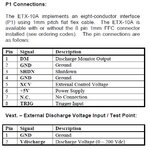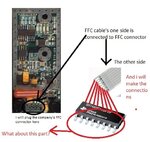ozgur85
Member level 1

Hello everyone
I joined the forum today and really appreciated the knowledge sharing with each other and helping out.
Can someone please help me? This question is giving my brain throbbing
I want to make a super pulsed 905 nm laser device. I want 5 laser modules in one box. I found a laser diode for this job. I attached it.
Question is, what driver should i use to make this laser diode work? What should i do? I have little electronic knowledge so can someone please give me information that i can understand.
Thank you very very much already!
- - - Updated - - -
By the way the specifications should be like this:
905 nm GaAs laser diode
60 mW average power
50 W "peak" power
200 ns flashing (50 W power for this period of time)
6000 Hz
I joined the forum today and really appreciated the knowledge sharing with each other and helping out.
Can someone please help me? This question is giving my brain throbbing
I want to make a super pulsed 905 nm laser device. I want 5 laser modules in one box. I found a laser diode for this job. I attached it.
Question is, what driver should i use to make this laser diode work? What should i do? I have little electronic knowledge so can someone please give me information that i can understand.
Thank you very very much already!
- - - Updated - - -
By the way the specifications should be like this:
905 nm GaAs laser diode
60 mW average power
50 W "peak" power
200 ns flashing (50 W power for this period of time)
6000 Hz



